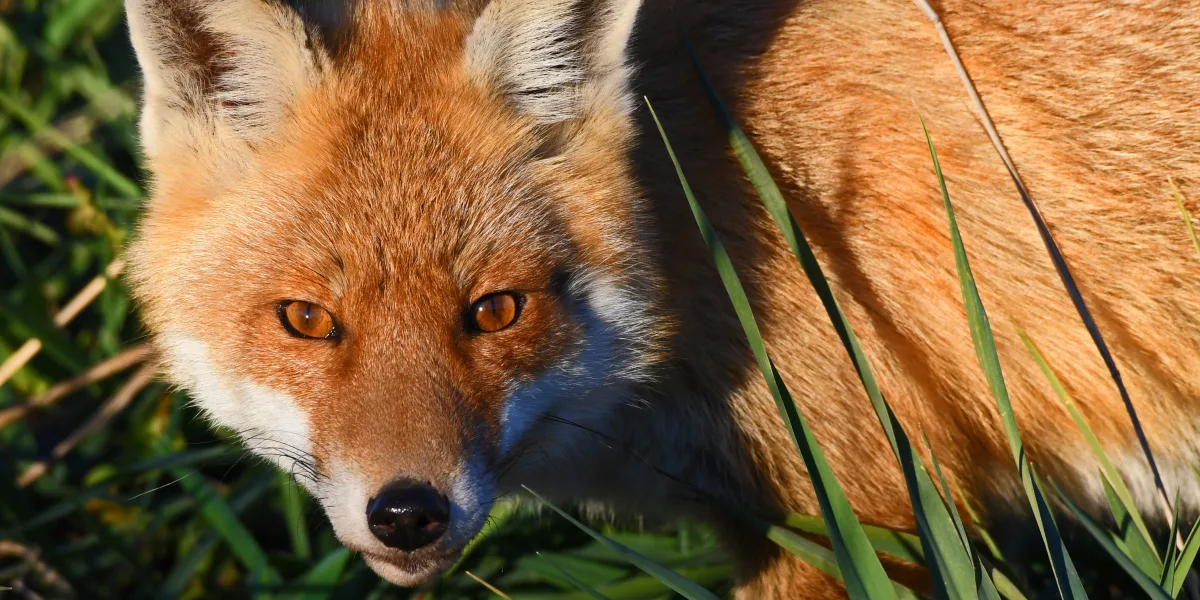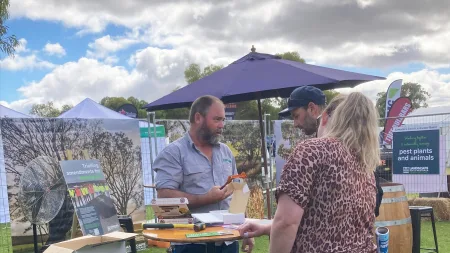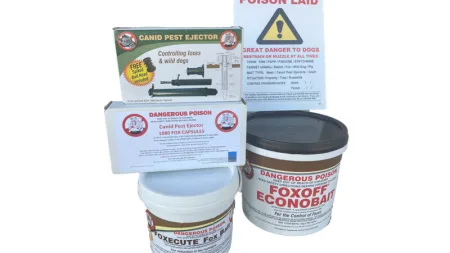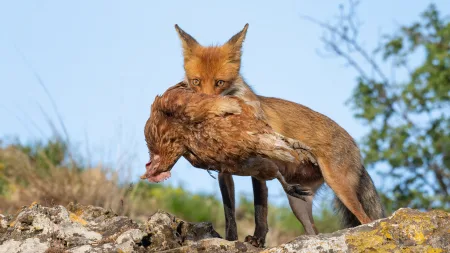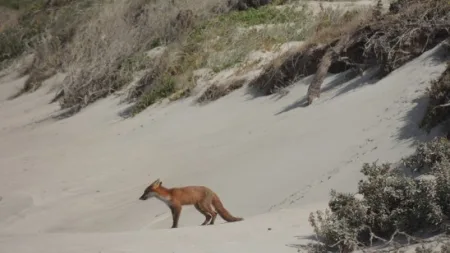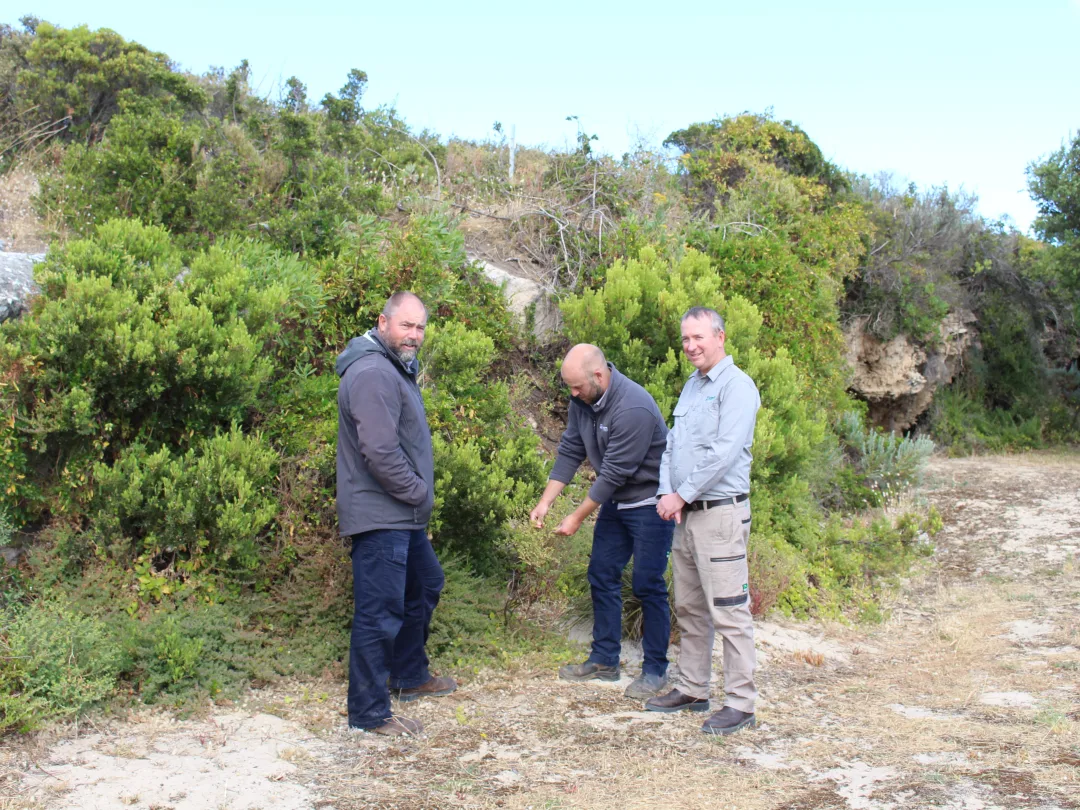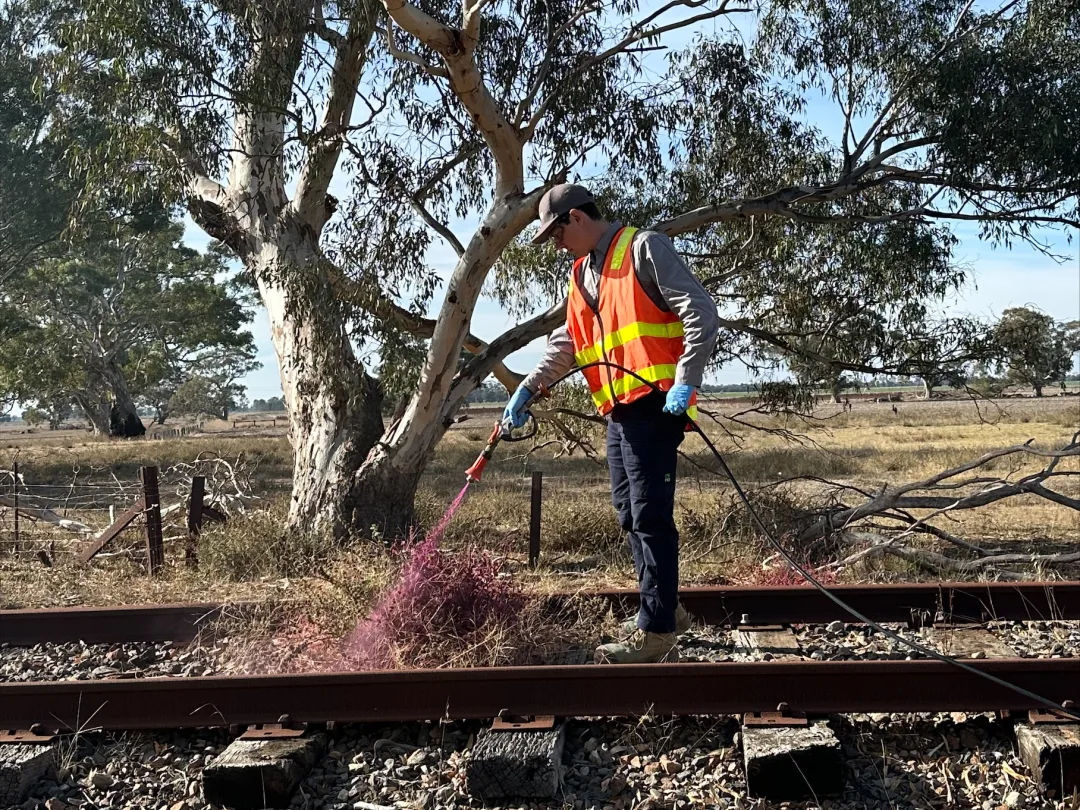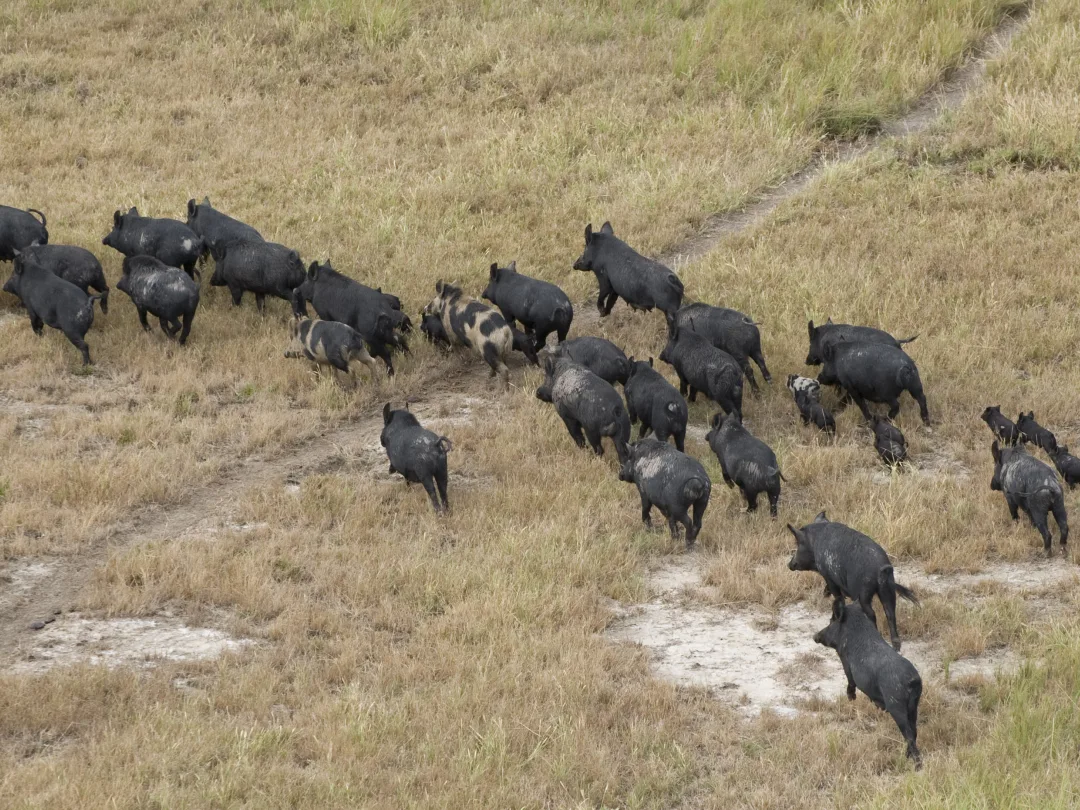The benefits to controlling foxes on your property
Controlling feral foxes on your property can provide many benefits.
Improve your agricultural productivity and profitability
Foxes are notorious predators of livestock, particularly lambs and poultry. Controlling fox populations can reduce the risk of predation, safeguarding your economic interests and ensuring the well-being of your animals.
Protecting our native wildlife
Foxes are highly efficient hunters and pose a significant threat to native wildlife, including small mammals and birds. Controlling fox populations is a practical way you can help protect native wildlife.
Reduction of disease risks
Foxes can carry and transmit diseases such as sarcocystis, toxospyridium mange, and distemper which can affect pets. Controlling fox populations helps mitigate the spread of these diseases, reducing health risks for both animals and humans on your property.
Reduce the spread of weeds
Being omnivores, foxes will feed on fruits from weeds such as feral olives and blackberry, spreading the seeds. Controlling fox populations may help stop the spread of weeds on your property.
Finding the right fox control method for your property
To achieve the best, safest and most humane results, plan your fox control in advance. Control methods need to happen at the right time, in the right order and need to suit your situation. For example a fox baiting program on your property prior to the peak lambing season in autumn and then again in spring helps to reduce the risk of fox predation on lambs. Your location, land size and proximity to neighbours are also important considerations. Fox control methods will vary from rural to semi-urban areas.
Preparing for fox control on your property
Talk to your neighbours and coordinate your fox control
Foxes do not recognise property boundaries. When
a fox is destroyed another will move into its territory within a relatively
short amount of time. This means for fox control to be effective it needs to be
at the largest possible scale and occur often.
Teaming up with your neighbours to bait at the same time with follow-up ground shooting and den fumigation will have a much greater result. It will reduce both the fox population and level of reinvasion.
We offer a 20% discount on baits purchased as part of group baiting programs to encourage large-scale fox control efforts in autumn and spring. You can collect baits from bait distribution days at locations across the region.
Getting the timing of your control right
Timing of control is important. Foxes are particularly vulnerable in:
- early spring, when vixens need more food
- summer when young cubs are dispersing
- early autumn when mature foxes are starting to establish dens for the winter breeding season.
Use multiple methods to control your foxes
The best fox control is using a variety of fox control methods. This can include ground shooting, baiting and fumigation of dens. Other options include using guard animals, trapping and exclusion fencing.
Baiting for the most effective control results
Baiting is the main control method for foxes. It is the cheapest and most effective large-scale tool available. Plan early as there is an approval process to complete before baiting can start.
You must adhere to all directions-for-use. This includes mandatory requirements to notify neighbours and sets distance requirements for laying baits. This assists with safety for other animals.
When to bait your property
Foxes are particularly susceptible to baits during early spring, and early autumn. For short term baiting programs, you should bait for 6 to 8 weeks before the desired peak impact (i.e. lambing). For effective long-term control, regular baiting needs to happen across a large area with 3 to 4 pulses per year (e.g. 2 months baiting, 1 month rest, or 2 months baiting, 2 months rest, repeat).
Bait types and how to access them
There are two main chemicals used for fox control, Sodium Fluoroacetate (1080) and Para-aminopropiophenone (PAPP). These chemicals can be used in shelf-stable baits, fresh meat baits or capsules for use in Canid Pest Ejectors (CPEs).
1080 and PAPP baiting can only occur on rural properties that are greater than 5 hectares. Traditional baiting methods of burying 1080 and PAPP baits also have a distance restriction of over 500 m from a residential dwelling.
1080 and PAPP are regulated chemicals with strict conditions of use and you can only access them from the Limestone Coast Landscape Board. Collection of baits can be organised through our Landscape Officers. Contact your local Landscape Officer to order your baits and arrange collection.
Collection locations occur in Millicent, Mount Gambier, Penola, Kingston, Naracoorte and Keith. Collection depots are not always open, ensure you call ahead.
If you are purchasing 1080/PAPP bait to use on your property, when you collect the bait you need to sign an Approval to Possess form. If you cannot collect your baits in person or are not the person who will do the baiting on your property, you must nominate an agent and fill out an Approval for Nominated Agent to Collect form. The agent must bring this completed form with them to collect the baits.
Contact your local Landscape Officer to order your baits and organise collection
Prices and quantities can be found on our price list
How to use your baits
Non-target animals, particularly domestic dogs, can die as a result of consuming 1080 and PAPP bait. You must read and follow all directions-for-use and safety information for your baits (including uneaten and unused baits).
You must notify all neighbours at least 72 hours before laying any bait on your property. This includes neighbours separated by a road. You must place signage at all entry points notifying that baits have been laid and that the area it is not safe for domestic animals and livestock. The Limestone Coast Landscape Board will provide the signs with the baits.
Using canid pest ejectors
Canid pest ejectors are a different tool for managing foxes and wild dogs in Australia instead of using buried baits. Canid pest ejectors are a mechanical device designed to deliver a measured dose of 1080 directly into the mouth of a fox. The device is activated when a fox pulls firmly (with a force greater than 1.6 kg) in an upward motion on the lure head that sits on top of the ground. This triggers a spring loaded mechanism that drives a piston into the poison-filled capsule, which propels its contents directly into the mouth of the fox.
The poison capsules are sealed and protected from the weather, meaning the toxin remains viable until the canid pest ejector is activated by a fox. Canid pest ejectors are still a risk to domestic dogs as they can also achieve the required pull force required to activate the device. Some landholders use non-toxic capsules to train their pets not to disturb them.
The canid pest ejector bait stations are secured into the ground and can reassure concerned neighbours about the possibility of movement of traditional baits.
Canid pest ejectors can be an important tool if foxes are stockpiling or avoiding baits or if other animals such as crows are disturbing buried baits.
Stockpiling (caching) is instinctive survival behaviour of foxes where they hoard a stockpile of baits for later consumption. Bait stockpiles may be outside the boundary of the property where foxes are being poisoned. This increases the risk of non-target animals, in particular domestic dogs, accessing baits. To minimise stockpiling ensure baits are placed as per the directions-for-use or consider using or switching to canid pest ejectors in areas of high bait take where you suspect they are stockpiling.
Baiting if you live in a semi-urban area
1080 and PAPP baiting cannot occur on properties that are less than 5 hectares. Traditional baiting methods of burying 1080 and PAPP baits also have a distance restriction of over 500 m from a residential dwelling. Canid pest ejectors provide greater flexibility and safety for landholders living in semi-urban areas. Canid pest ejectors can be placed up to 150 m from residential dwellings and there is no minimum property size.
Fumigation of dens
Fumigation of fox dens is best suited to localised fox problems, such as in or near lambing paddocks, or nesting areas. It is time consuming and labour intensive so not suitable for wide-scale control. Carbon monoxide is the only fumigant registered for foxes.
Although den fumigation may locally reduce the number of foxes or problem animals, it is not effective as a standalone fox control method. Fumigation should be used when the vixen and cubs are confined to the den during August to October. The vixen is likely to be killed in the den only during the first 3 weeks after the birth of the cubs.
Where the den is accessible to appropriate machinery, deep ripping should be used to destroy it following fumigation. You should revisit dens each year to check for fox activity and to refumigate and destroy dens. Operators must follow the directions on the label when using carbon monoxide cartridges. They must not be used for any other purpose.
Other methods to support your fox control program
Exclusion fencing
Wire exclusion fences can keep foxes out and prevent damage to high value assets but will not reduce fox numbers. Foxes are agile animals capable of passing through, digging under, jumping over, or even climbing various types of fences. Wire netting mesh size must not exceed 80 mm (approx. 3 inches) and any small scale enclosures for the protection of poultry should be fully enclosed to prevent foxes climbing inside. Fox exclusion fencing should be checked regularly for unintended trapped native animals. Large-scale fox exclusion fencing to protect native wildlife should be at least 1.8 m high. It should also have a 60 cm 'floppy top' and a 'bottom apron or skirt' extending out 40 cm to prevent foxes digging under.
Guardian dogs and alpacas
Some farmers use trained guard animals such as Anatolian shepherds, Maremma sheepdogs, and alpacas to keep their livestock safe from fox attacks. It is important to note that trained guard animals will not reduce a fox population and is a method best used in conjunction with other control options.
Shooting
Ground shooting can be best used to complement other control methods especially if targeting bait shy foxes at the end of a baiting program. Shooting is labour intensive and can make foxes wary. Spotlight shooting with a whistle in late summer and early autumn can attract young foxes. Avoid shooting during baiting as it can disrupt foxes and reduce the effectiveness of your baiting program. For animal welfare reasons, shooting should not occur while vixens have dependent young.
Shooting can be a humane method of destroying foxes when done by experienced, skilled and responsible shooters. It should be done in accordance with the Centre for Invasive Species Solutions National Code of Practice for the humane control of foxes.
Read the National Code of Practice for the humane control of foxes
Trapping
Cage and jawed leg-hold trapping can be used to remove problem foxes such as mature adults who are wary of baits and spotlight shooting. Trapping is not recommended as an effective way to reduce high numbers of foxes quickly. It requires a significant amount of time and effort.
Jawed traps have stipulations regarding rubber jaws and jaw types. All traps must be checked regularly and foxes contained must be destroyed humanely. Once trapped, it is an offence to release the fox alive.
Removing other pest animals
Foxes are a natural predator of pests such as rabbits and vermin. These pests often sustain fox populations in an area. Integrating control of other pest animals, such as rabbits, on your property can support fox control efforts by removing a food source. Controlling rabbits and other vermin while controlling foxes is important for effective control.
Local Landscape Officers, local knowledge
We have a responsibility to ensure foxes are effectively managed across the Limestone Coast region, this is guided by the Limestone Coast Pest Plant and Animal Strategy.
Our Landscape Officers are spread throughout the Limestone Coast. They work with you to help you control foxes on your property by providing:
- local advice on control methods and timing of control
- supply of fox and rabbit bait and equipment
- help to coordinate pest control with your neighbours.
To find the best fox control solution to suit your needs contact your local Landscape Officer by calling 08 8429 7550 or find your local Landscape Officer.
Find your local Landscape Officer
Read the Pest Plant and Animal Strategy today [PDF, 1 MB]
Recording fox activity in FoxScan
FoxScan is a free resource for landholders, Landcare groups, community groups, local Councils, professional pest controllers and biosecurity groups to assist with fox control. Information you enter can alert local biosecurity authorities and your community about fox activity and can help to protect domestic animals and native wildlife from fox activity.
If you are undertaking control, you can use it to document where you are baiting or setting traps for foxes. FoxScan helps communities work together to coordinate control.
Visit FoxScan
Understanding your responsibilities
In the Limestone Coast, foxes are declared for control under the Landscape South Australia Act 2019 (the Act).
Under the Act, you are responsible for the control of foxes on your property. It is also illegal to keep foxes as pets.
Fox ecology and habitat
Foxes thrive in varying habitats, including urban, rural and arid areas. In rural settings, foxes are commonly found in areas with sparse bushland cover, where they have access to ample shelter and food options. During the day, the fox sleeps in dens, logs and other shelter. Foxes are mainly nocturnal (night-time) hunters, being most active from dusk until dawn. They scavenge and prey on whatever food sources are available.
The main food source for foxes are small animals such as native wildlife, pest animals like mice and rabbits and livestock. They eat insects and fruit, particularly in summer when preferred prey is less abundant.
Both males and females are sexually mature at the age of one year. Litters, averaging four cubs, are born during August and September, and emerge from the den in late spring. The cubs move away from the family territory in late summer or autumn.
A territory for a fox is generally not more than 8 km in diameter. During the birthing season, adult foxes usually remain within 0.8 km of the den. Ranges are largest during the winter.
